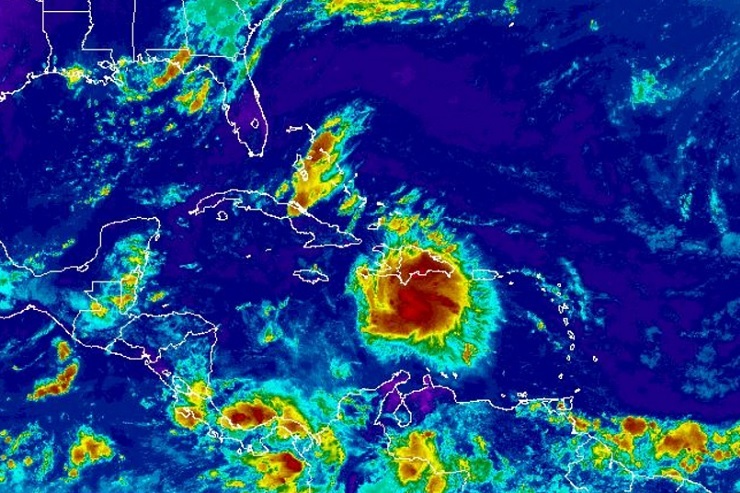
Earl, the fifth named storm of the Atlantic season, is expected to become a hurricane before landfall as it neared Belize on a track that may take it into the oil-rich Bay of Campeche by the end of the week.
The system was 350 miles (565 kilometers) east-southeast of Belize City and had top winds of 60 miles per hour, up from 50 miles earlier in the day, the U.S. National Hurricane Center said in an advisory at about 11 p.m. New York time Tuesday.
“The core of Earl is expected to pass just north of the Honduras Bay Islands Wednesday afternoon, and then be very near the Belize coast early Thursday,” the hurricane center said. “Hurricane conditions are expected to begin in portions of the hurricane warning area in Belize and Mexico Wednesday night or early Thursday.”
More than three-fourths of the crude produced by state-owned Petroleos Mexicanos, or Pemex, comes out of the Gulf of Mexico, including sites in the Bay of Campeche. The company, which produced 2.18 million barrels of oil a day during the second quarter, said it’s monitoring Earl’s progress.
The storm’s approach triggered hurricane and tropical storm warnings. Belize’s National Emergency Management Organization urged residents in the storm’s path to flee. A storm becomes a hurricane when its winds reach 74 mph.
Winds, Rain
“Early Thursday morning it should make landfall somewhere in Belize or the far southern Yucatan as a strong tropical storm or hurricane,” said Paul Walker, a meteorologist at AccuWeather Inc. in State College, Pennsylvania. “Probably by Thursday night it will come back out in the Bay of Campeche.”
Earl’s tropical-storm strength winds reached out about 90 miles from its center, and it’s forecast to produce as much as 12 inches (30 centimeters) of rain across Honduras, Guatemala and Mexico’s Yucatan Peninsula and more than a foot over Mexico and Belize, which could result in “life-threatening flash floods and mud slides.”
Belize’s emergency agency warned that Earl may cause power outages, flood crops, uproot trees and destroy older wooden buildings. In the aftermath of the storm, flood waters may contaminate water and pose health risks.
Recommended for you
